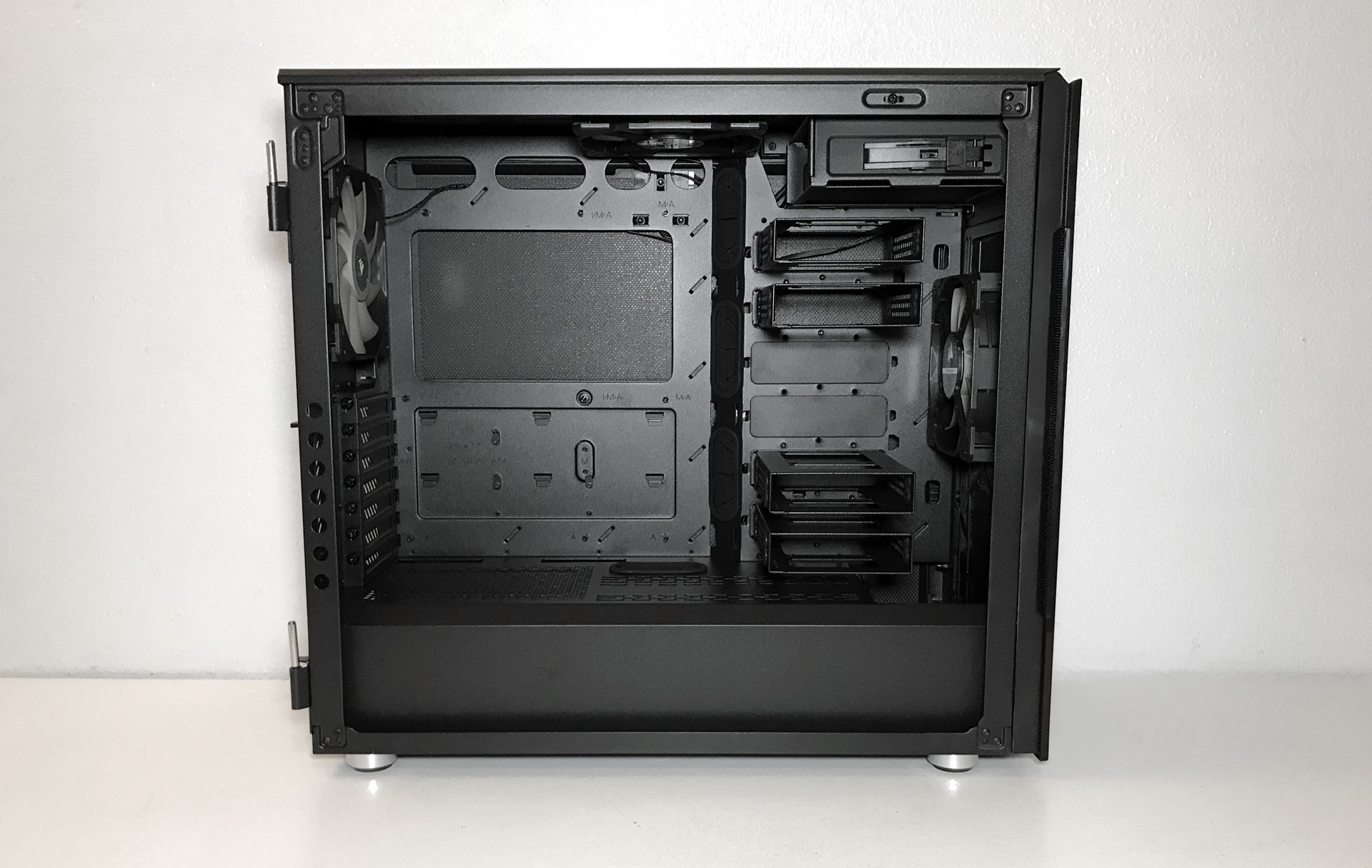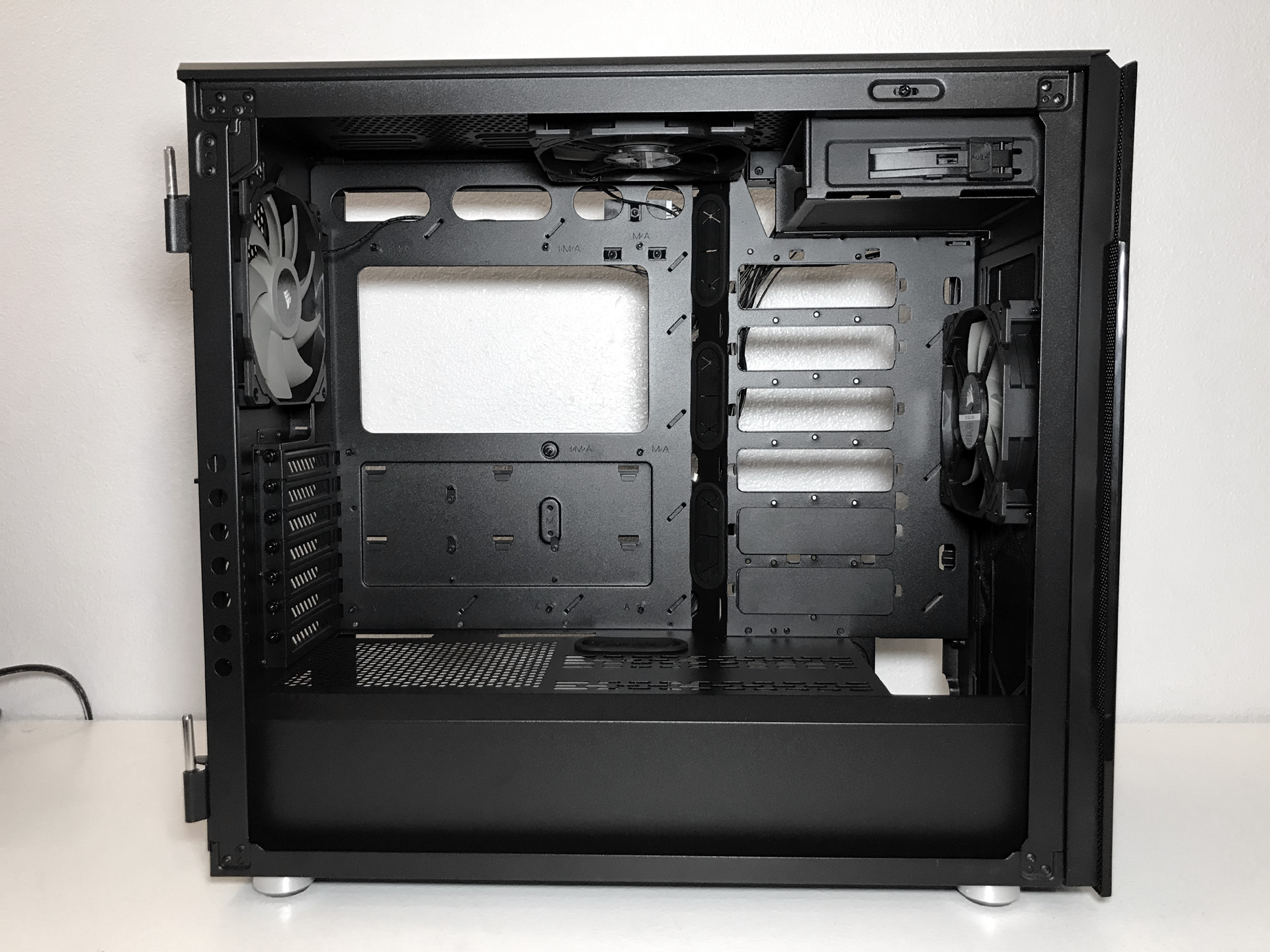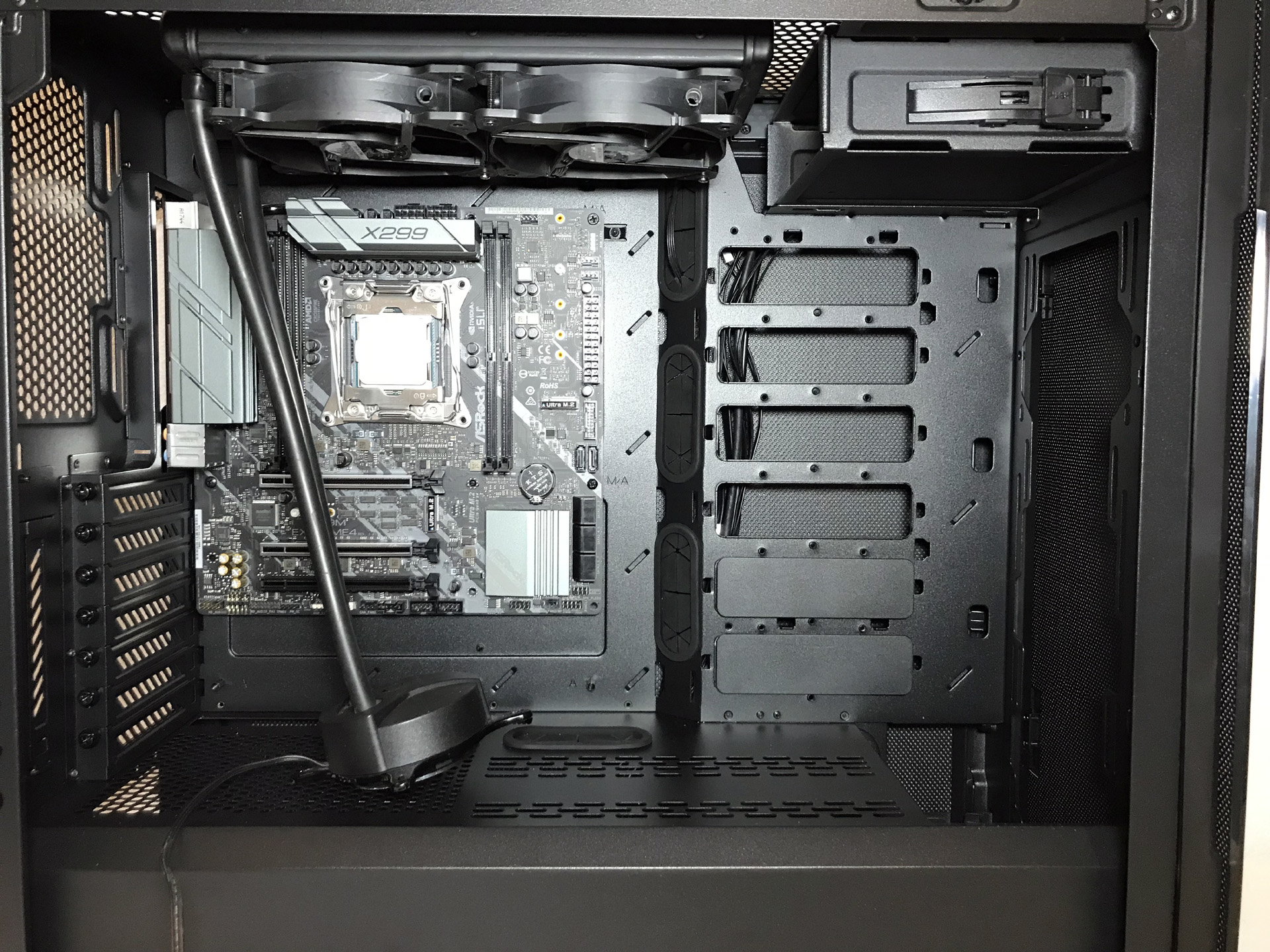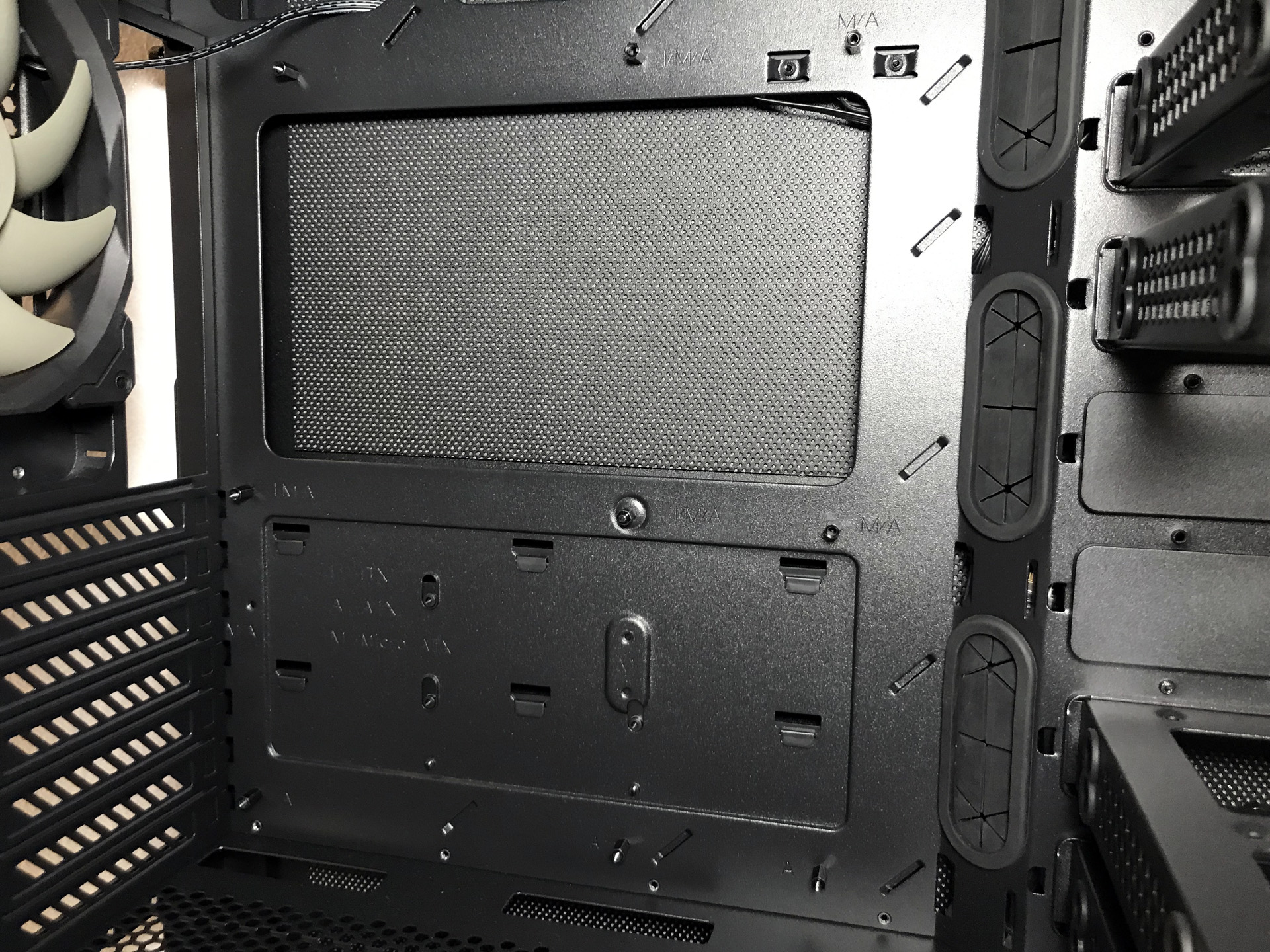Corsair Carbide 678C Review: Old-School Cool
Why you can trust Tom's Hardware
Hardware Installation and Test Configuration
A small brown box containing a variety of screws and a dozen or so zip ties comes packed into one of the open 3.5" drive bays. The case manual and sound-damping vent cover for the top of the case can be found on top of the PSU tunnel.
Test Configuration
Drivers & Settings
| Chipset | Intel INF 10.1.1.42 |
| CPU | 4GHz (40x 100MHz) @ 1.1V core |
| Motherboard | Firmware 1.10 3/2/2018 |
| RAM | 14-14-14-34 |
| Graphics | Maximum Fan for Thermal Tests | NVIDIA GeForce 398.36 WHQL Game Ready Driver |
Interior
The interior of the Corsair Carbide 678C is painted black to match the exterior. Three large cable pass-through holes with rubber grommets perforate the motherboard tray, along with three holes in the top of the PSU tunnel, one with a rubber grommet, two with rolled metal edges. The holes in the upper edge of the motherboard tray are specifically designed for routing the ATX12V/EPS12V power cable and fan cables to the fan hub.




The seven (plus two vertical) expansion slots will accommodate graphics cards up to 350mm (13.8 inches), even in multi-GPU configurations. The vertical VGA GPU slots allow builders to install a PCIe x16 riser cable (not included) to show off a fancy GPU by mounting it vertically. You can use CPU air coolers up to 170mm (6.7 inches) tall in this case.
As far as storage options are concerned, the Carbide 678C can accommodate up to six 3.5-inch hard drives, four in "floating" modular hard drive trays in the main component compartment and two under the power supply shroud. A total of three 2.5-inch SSDs can be mounted on a unique bracket behind the motherboard tray. With the exception of the plastic 2.5-inch bracket, all drive cages come with rubber grommets for vibration damping.






Corsair also includes two block-off panels to cover the holes in the motherboard tray when they’re not filled with a hard drive cage. But it would have been nice if the company had included enough block-off panels to cover all six holes should you chose to utilize only the storage locations under the PSU shroud. The space behind the motherboard tray is a bit tight, especially with SSDs installed in the 2.5-inch mounting bracket; careful cable routing is required.



Corsair includes three 140mm fans; one pre-installed in the top, one in the front and one in the rear. If you’re going to use the top sound-damping vent cover, we recommend moving its 140mm fan to the front of the chassis for better airflow. The PWM fan repeater controls all three included 140mm fans and has enough additional headers to power another three fans, all from a single 4-pin PWM motherboard header.




Those who prefer liquid cooling will appreciate the fact that radiators and all-in-one coolers up to 360mm can be mounted in the top and front of this case. You can even mount a 420mm radiator in the top with optical drive bay removed.
Get Tom's Hardware's best news and in-depth reviews, straight to your inbox.
The mounting location in the front of the chassis can easily support radiators up to 360mm, sandwiched between fans in a push-pull configuration if you remove the modular drive racks. The rear of the chassis supports 120 / 140mm radiators or all-in-one coolers in the exhaust fan location over the CPU socket area in single- and dual-fan configurations.



We fitted the Carbide 678C with power supplies up to 225mm in length without any issues. Those needing even more space also have the option of removing the hard drive cage under the PSU tunnel.
MORE: Best Cases
MORE: All Case Content
Current page: Hardware Installation and Test Configuration
Prev Page Features and Specifications Next Page Benchmark Results and ConclusionSteven Lynch is a contributor for Tom’s Hardware, primarily covering case reviews and news.

